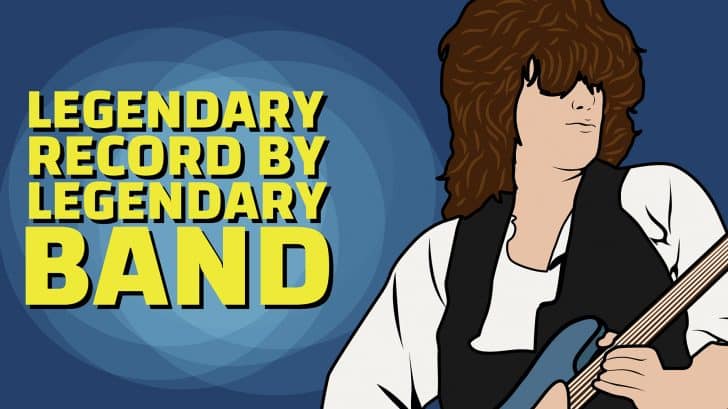A Legendary Record By A Legendary Band
Led Zeppelin is always the band that is difficult to talk about. Unlike, the Rolling Stones, and the Beatles – you can just define them as swaggers, and hitmakers. But Led Zeppelin, they weren’t just all about the glam, – they had the force, power, mystery, that unknown factor that doesn’t exist until you listened to them.
The Zepellin just like the Beatles managed to bring in several influences, and we all definitely know that they had the most amazing music and the most respectable band there is.
And with the album Led Zeppelin IV – this is the time where things got real.
The album was indeed badass, it’s like Jimmy Page was sending us a message by saying,
“Removed the name off, no title, nor even logos – just nothing.” That’s what you call BALLS.
Below are the 10 facts you probably didn’t know about the album:
1. There was a reason for not including their name or faces on the cover.
“The cover wasn’t meant to antagonize the record company,” Jimmy Page told reporter Brad Tolinksi in 2001. “It was designed as our response to the music critics who maintained that the success of our first three albums was driven by hype and not talent. … So, we stripped everything away, and let the music do the talking.”
2. The opening intro of “Black Dog” is a byproduct of studio technology.
https://www.youtube.com/watch?v=zcBjfBpgH8Q
As Case explains, “Page did a lot of overdubbing, so when you’ve got three separate tracks of guitars to be played together, they have to get synched. It’s the sound of the tape rolling. He could have cut it out. It’s just them getting lined up from the separate takes and all.” Instead, the guitarist left them in, thinking it sounded like “the massing of the guitar armies.”
3. Robert Plant was the only one moving normally one “When the Levee Breaks.”
4. Four Sticks is only the least popular song on the album (so-they-say)
5. It was recorded in several different places.
6. The started crediting their lyrical inspirations when they released this album.
https://www.youtube.com/watch?v=KqeKikpLQ5o
“One thing I didn’t even mention in the book, that I heard just recently, I was listening to Count Basie, and he has a song called ‘Going to Chicago’ – “Sorry that I can’t take you.” So, obviously Plant was getting into that at the end of ‘Levee.’ So, all the lyrics were taken from Memphis Minnie, except for that little bit of Basie at the end. By that point, by IV, I think they knew it was too obvious, that they couldn’t take someone else’s song and all the credit for it, so they snuck her name on it at the end.” – Jimmy Page
7. There are no backward messages on “Stairway to Heaven.”
“It sounds cool; it’s a great legend – but all that is just something that’s been thrown at it from long after the record was done. It wasn’t until the ’80s, after Zeppelin broke up, that these ideas started getting aired in public. It had to do with the religious backlash that happened in those days, people were reading satanic messages into Dungeons and Dragons. This was just one more target for them. The band did use backward sounds, for the aural effect, but they weren’t trying to put any messages on there.” – Jimmy Page
8. They weren’t the first artists to name a song “Stairway to Heaven.”
https://www.youtube.com/watch?v=w3caGQ9_ipI
9. There was supposed to be only eight songs on IV.
10. The symbol on the album doesn’t mean a thing.
“They were put together pretty hastily, people have read so much into them over the years. When you get down to it, it sounds like John Paul Jones and John Bonham just said, ‘Oh, we’ll pick these, you know, sure, whatever,’ they weren’t that interested. Robert Plant picked the feather in the circle from some mystical account of some lost civilization that probably never existed. It was one of those hippie things that they thought was out there. Page’s “Zoso,” goes way back to the renaissance, really, but basically it’s a representation of Capricorn from a document dating back the 1500s. In those days, the way people drew astrological symbols was a lot more elaborate than just scales or fish, but it does derive from a symbol for Saturn, or for Capricorn. It’s nothing satanic or anything like that.” – Jimmy Page


